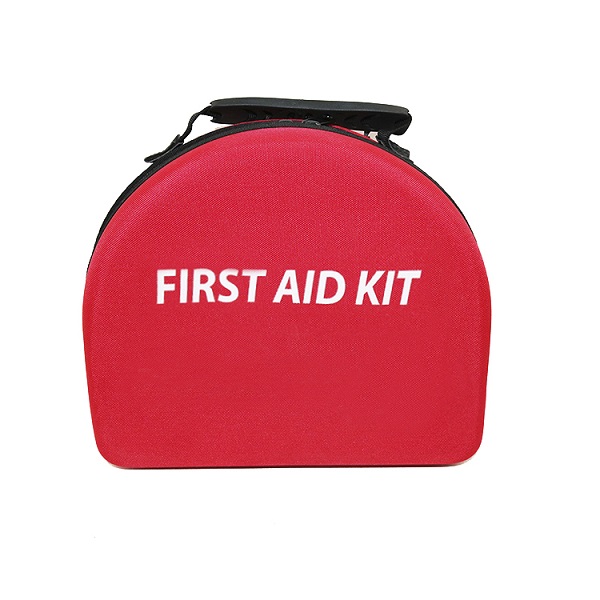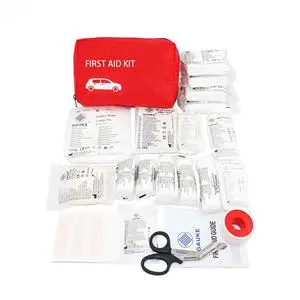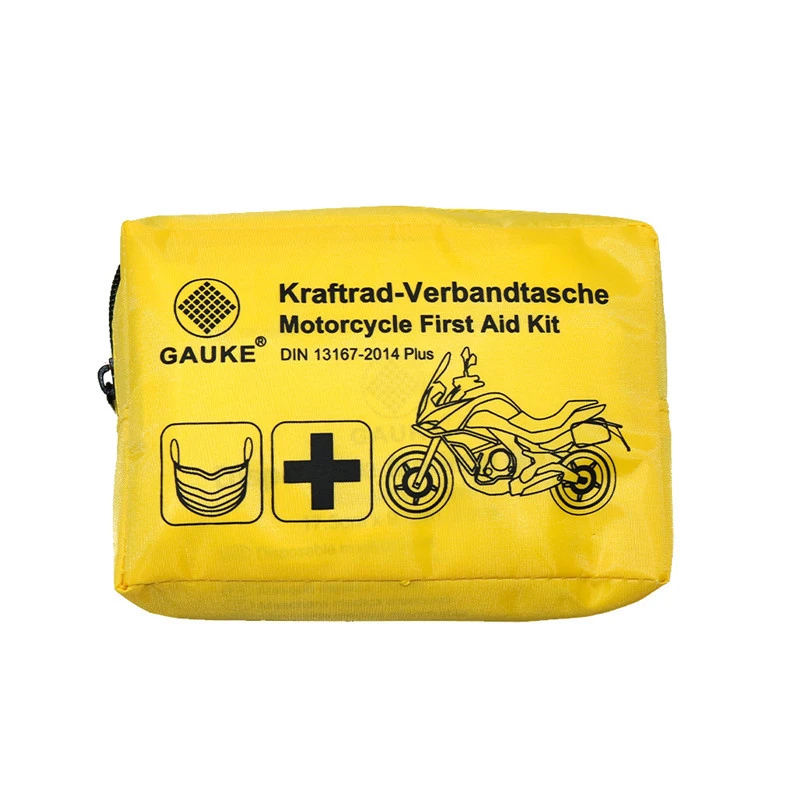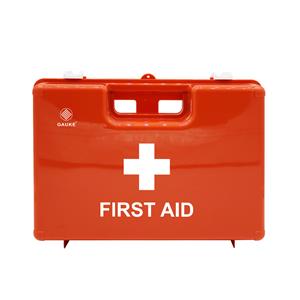Why You Should Put Together An Outdoor First Aid Kit When Adventuring Outside
Why Pack an Outdoor First Aid Kit?
An outdoor first aid kit is an essential item when going outside. It's also a good idea to keep one in your car. You never know when you might need it. Here are some reasons why you should pack a first aid kit:
1. You never know when you might need it.
2. First aid kits can help save lives.
3. They can be used to treat minor injuries and illnesses.
4. First aid kits can help you feel prepared for any emergency.
5. They are relatively inexpensive and easy to pack.
Packing a first aid kit is a simple way to prepare for emergencies. It could mean the difference between life and death in some cases. Be sure to include bandages, ointments, and pain relievers in your kit.
If you enjoy going outdoors, you need a first-aid kit in your bag
You never know when you might need to perform first aid on yourself or someone else. You need a first-aid kit in your bag if you enjoy going outdoors.
The best outdoor first-aid kit should be portable and easy to carry. You don't want to be fumbling around in your bag for bandages when someone needs help.
There are many different kinds of kits available, so make sure to choose one that is right for your needs before purchasing it. Here are some tips for selecting the right kit:
Choose a small pack that will fit in your backpack or purse. You don't want to hold onto it while performing first aid on someone else!
Ensure there are enough supplies for minor cuts and scrapes and more severe injuries like broken bones or burns.
Look for a kit that includes instructions for administering CPR and other critical medical procedures like splinting broken bones or treating an allergic reaction.

What is in a First Aid Kit?
An outdoor first aid kit is a collection of supplies and equipment used to provide medical treatment. It is usually kept in an easily accessible place in an emergency. First aid kits can be bought pre-made, or you can make your own. The contents of a first aid kit will vary depending on its purpose, but some everyday items include bandages, antiseptic wipes, pain relievers, and scissors.
Different Wound Care Options
There are many different types of wounds, each requiring a specific kind of care. Depending on the severity of the wound, you may need to seek professional medical help. For minor injuries, however, there are a few different options for care that you can choose from.
One option is to clean the wound with soap and water simply. This will help to remove any dirt or debris that could cause infection. You may also need to remove dead tissue from the wound with a sterile instrument. Once the wound is clean, you can apply a bandage or wrap to protect it.
Another option is to use an antiseptic solution on the wound before bandaging it. This can help to prevent infection further. There are many different types of solutions available, so be sure to choose one that is appropriate for your particular kind of wound.
You may seek professional medical attention if the wound is more severe. Severe wounds may require stitches or other types of closure to heal correctly. In some cases, you may also need to have the wound cleaned and dressed by a medical professional regularly.
What to do for Cuts and Scrapes
If you have a cut or scrape, it's essential to clean the wound right away. This will help prevent infection. Follow these steps:
1. Wash your hands with soap and water.
2. Apply pressure to the wound with a clean cloth to stop the bleeding.
3. Rinse the wound with warm water.
4. Apply an antibiotic ointment to the wound if it is deep or bleeding heavily.
5. Place a bandage over the wound and secure it in place.
You should see a doctor if the wound is more than a half-inch deep, if it won't stop bleeding, or if it appears to be infected (red, swollen, and painful).
What to do for Burns
If you have a burn, it's essential to seek medical attention immediately. However, you can also do some things at home to help treat the burn and promote healing.
Cool the burn: Run cool water over the burn for at least five minutes. This will help reduce swelling and pain.
Remove jewelry: If you have jewelry on the burned area, remove it. Swelling can cause jewelry to become tight and difficult to remove later.
Don't break blisters: It may be tempting to pop blisters that form on the burned area but resist the urge. Popping blisters can lead to infection.
Apply a sterile bandage: Once the burn has cooled, apply a sterile dressing or wrap. This will help keep the area clean and protected from further injury.
Take over-the-counter pain medication: If the burn is painful, take over-the-counter pain medication such as ibuprofen or acetaminophen.
Follow your doctor's instructions: Be sure to follow your doctor's instructions for caring for your burn. They will likely give you specific instructions on caring for the wound and when to return for follow-up appointments.
How to Properly Put on a Bandage
If you've ever had a cut or wound, you know the importance of properly putting on a bandage. But in case you've never had to do it before, here's a quick guide on how to do it right.
First, clean the wound with soap and water. This will help prevent infection. Then, dry the area around the wound.
Next, apply an antibiotic ointment to the wound if desired. This will help keep the wound moist and promote healing.
Now, take your bandage and cut it to size. Make sure it is big enough to cover the entire wound and extend beyond its edges by at least an inch.
Once your bandage is cut to size, gently place it over the wound and secure it with adhesive tape. Be sure not to wrap the bandage too tightly as this could impede circulation.
And that's it! Make sure to change your bandage regularly and re-apply for ointment as needed. With proper care, your wound should heal in no time.
What Other Necessities Should You Pack?
When packing for a trip, most people focus on the essentials like clothes, toiletries, and electronics. But other items can be just as important, if not more so. Here are some other necessities you should pack for your next trip:
-First aid kit: This is essential for any trip in case of minor injuries or illnesses.
-Medications: If you take prescription medications, pack them in your carry-on luggage in case your checked baggage gets lost.
-Snacks: Bring snacks like granola bars or trail mix to keep your energy up during long sightseeing days.
-Water bottle: Staying hydrated is key to having a good time while traveling. Please bring a reusable water bottle so you can fill it up as needed.
-Map: A physical map can come in handy when exploring a new city or region. It's also a good backup if your phone battery dies and you can't access Google Maps.
Final Recommendations
When you're outdoors and something happens to you, you last want to consider whether you're carrying a suitable first aid kit to handle your situation. That's why we created Guaki outdoor first aid kit—a carefully-curated collection of everything you need in an emergency, conveniently packed into a package that folds up and fits snugly into a small bag or pocket. It's the perfect size for hikers, campers, kayakers, skiers, rock climbers, and more. Just toss it in your backpack or glove compartment, and it'll be there waiting for you when something happens.
The Guaki outdoor first aid kit is a comprehensive first aid kit for outdoor activities and emergencies. The bag contains all the necessary items to care for minor injuries. The Guaki outdoor first aid kit has been designed for people who travel, hike or camp in the wilderness. It also fits perfectly in your car or boat.
Hiking, camping and other outdoor activities can be dangerous if you don't have the right equipment. It's important to be prepared for any eventuality. An excellent first aid kit is essential to every trip into nature.





